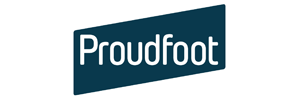Managing and consistently delivering CAPEX projects on time and to budget is not a new challenge for business leaders. Before the Coronavirus pandemic, the average budget of a capital project typically overran by 65 percent. A further 50 percent of projects reported completion delays.[1] Budget blowouts and schedule overruns can negatively impact the overall financial performance of a company and ultimately impact the share price. This was before a global pandemic - imagine how high the stakes are now.
Pre-COVID it wasn't uncommon to experience significant project delays, with some projects doubling or tripling the original budget. Companies with deep pockets were able to absorb the financial impact of overruns and blowouts. Now in the post-COVID world, for large and small companies alike, managing capital projects more effectively without budget blow-outs and schedule overruns is essential.
At the start of the year, 2020 looked promising for mining CAPEX projects with the top 20 miners collectively expecting CAPEX growth of 11 percent. Capital expenditure for the world's 20 leading mining companies grew by 12% in 2019, reaching $49.1bn. While not as significant a growth as in 2018 (+20%), it signaled a continued steady recovery from the lows of 2016 and 2017. However,; COVID-19 has turned this on its head, with the virus causing many projects and investments to be put on hold indefinitely or delayed for a prolonged period.
COVID-19 has disrupted many capital projects, presenting miners even more complexity in how to manage such projects going forward. When the stakes are so high, there is little room for budget blow outs and schedule overruns as miners are already behind the eight ball as they emerge from hibernation.
Delivery of capital projects is a complex undertaking at the best of times. Historically primary industries, engineering firms and their contractors have underinvested in developing detailed integrated project management systems, internal project management teams and contractor management capability.
Recently, miners have been compensating for this underinvestment by transferring the project schedule and budget risk onto engineering firms and their contractors.
These firm and contractors are less capable of managing these project issues, due to their under investment in developing their internal talent, digital solutions and operating a business model based on a cost plus versus turn key solutions.
These issues are further exacerbated when miners do not have clear visibility of project performance and are not able to manage projects effectively in real-time.
Five areas to prioritize to manage your capital projects more effectively post-COVID
Mining leaders need to resolve these issues in the post-COVID world. Now is the time to improve the management of capital projects and strive to create a new industry standard where project blowouts and overruns are not so common. From deciding what projects to fund to managing a project on time and to budget, and then guaranteeing the return on the investment, leaders can get more from their projects when they address the following five areas in their overall management approach:
1. Portfolio management - what's in and what's not.
Companies of all sizes have a limitless supply. Deciding where to invest your money is critical and requires centralized scrutiny to determine what is best for the business. Currently miners carefully evaluate and scrutinize their proposed capital projects to validate the proposed spend and estimated benefits, as well as the cash flows projections. We recommend regular review of the project portfolio using scenario reviews, highlighting assumptions and constraints. Every project in the portfolio should have regular realistic assessment and "cold eyes" review of risks and design assumptions. Identify your short- and medium-term goals and ensure that project investments are aligned with those goals.
Prioritizing the sequence and timing of projects and sustaining capital is all part of the mix of leader's responsibilities. By applying lean and agile project management methodologies, we can effectively compress project schedules by as much as 30 percent. When you establish a "Results Hub" inclusive of a Project Management Office (PMO), procurement, supply chain logistics, risk tracking and stakeholder / ESG outcomes, you can ensure adequate focus, resourcing and standardized reporting on progress so that the need for corrective action is detected early and actioned.
2. Planning and execution - the devil is in the detail and in alignment.
To drive more value from your capital projects, detailed planning and strong execution is key. Your all-encompassing project plan should include several elements, such as:
- A list of key outputs and a comprehensive schedule, with detailed construction packages, for vendor specifications on long-lead items
- A sequenced site readiness plan, including all services, housing, and personnel logistics; recognizing current Covid-19 requirements
- A schedule of purchase order issue dates and delivery dates to the site
- An optimized construction schedule where performance assumptions are validated
- An all-inclusive and sequenced site mobilization and commissioning plan, coordinated across stakeholders.
- An operational readiness plan and staged ramp-up schedule based on OEM recommendations.
As part of your planning process, you must also prioritize alignment. Misalignment of priorities wastes efforts and schedule slippage as the project progresses. As a first step in project design, establish early alignment on clearly defined goals, identifying all stakeholders, budget, spending schedule and post-project cashflow expectations. By developing a formal plan with a detailed internal review across all stakeholders, we can determent what project outcomes must be achieved and which risks must be avoided. A series of workshops, contractor agreements and our propriety alignment tools quantifies misalignment numerically.; These metrics help leaders to address misalignment swiftly head-on, which prevents potential hurdles.
3. Procurement processes that deliver clarity.
Having an established procurement practice, supported by a robust logistics chain, reduces risks and adds significant value to your project by protecting and safeguarding the overall schedule. There are three primary areas of focus for procurement in capital projects. Firstly, ensure that everyone understands the project goals and priorities. Secondly, ensure that there is a universal contract language that everyone understands to avoid room for ambiguity. Finally, validate delivery dates on a short interval control basis and track them through the logistics chain. Use a scorecard to forecast and track vendor performance show supply risks - this is particularly important in the post-COVID world.
Additionally, if one of the stakeholder goals is to develop local capability and capacity to supply goods and services, early sourcing of local suppliers contributes to the company's ESG and License To Operate.
4. Active supervision and going #HeadsUp.
Part of driving more value from your capital projects, is to build a strong foundation for the operating phase by ensuring productivity goals are achieved during the construction phase of an investment project. Taking proactive steps in detailed planning, alignment and execution will help to create streamlined processes during this phase. However, to keep projects on schedule, we need to ensure that supervision, communication, and connection between leaders and their staff are effective.
Front line management and supervision capability is the highlight of Proudfoot's #HeadsUP leadership movement (headsup.global), a guiding framework for many of our projects to keep teams focused on the team schedule especially if they are working remotely. #HeadsUP calls managers and supervisors to check-in regularly with their teams through a 1.5.30 Connect culture- by checking in once a day to review plans, current status, discuss and resolve potential issues, followed by a weekly review of accomplishments versus the plan, KPI trends and status of deliverables, and lastly to a monthly review of performance and objectives versus the overall schedule. These Active Management Behaviors (AMB) ensures employee engagement and talent development. The #HeadsUp leadership program delivers engaged, enabled, and energized teams with successful projects.
5. Ongoing operational excellence for stability and high performance.
There are high expectations for return on the investment for every capital project. However, newly commissioned and completed projects experience some early performance barriers during the startup phase due to a combination of unresolved or undetected issues from the design or construction phases. Furthermore, operating errors may occur when new teams attempt to operate new installation initially.
We can speed up your road to stability and operational excellence by anticipating issues from actively managing the project schedule through the Results Hub. The Results Hub will utilize #HeadsUp and AMB's to support productivity, ensure stakeholder alignment, and support an integrated MOS; to help you design the operational framework and promote active supervision among managers to reduce errors and improve performance.
As part of your ongoing operational excellence strategy, developing new modes of operation, focusing on improvement versus capital injection solutions, accelerating development of internal project management skills, and building the right partnerships will create operational capacity to support future project management requirements.
In summary, managing capital projects is a complex process that has become more challenging because of recent COVID-19 pandemic which put mining capital projects on hold for prolonged periods or indefinitely. As countries start to emerge from various lockdowns, the restarting and ramping-up of projects is now in sight. To move projects along, leaders have much to consider to avoid further budget blowouts and schedule overruns. In the new post-COVID world, we have to re-invest new ways. Adopting a new standard is part of the reboot to prevent outdatedness. Our aforementioned outlines better positions leaders to manage project portfolios with operational excellence, and results-oriented best practices in mind.
[1] Project Management Institute annual survey 2019
ABOUT THIS COMPANY
Proudfoot
We design, implement and accelerate operational and digital transformation through people. Realizing tomorrow's results, today.
HEAD OFFICE:
- 4th Floor, St Paul's House, 10 Warwick Lane, London EC4M 7BP, United Kingdom
- Tel: +1 470-548-6489
- Web: www.proudfoot.com
- Email: info@proudfoot.com




























